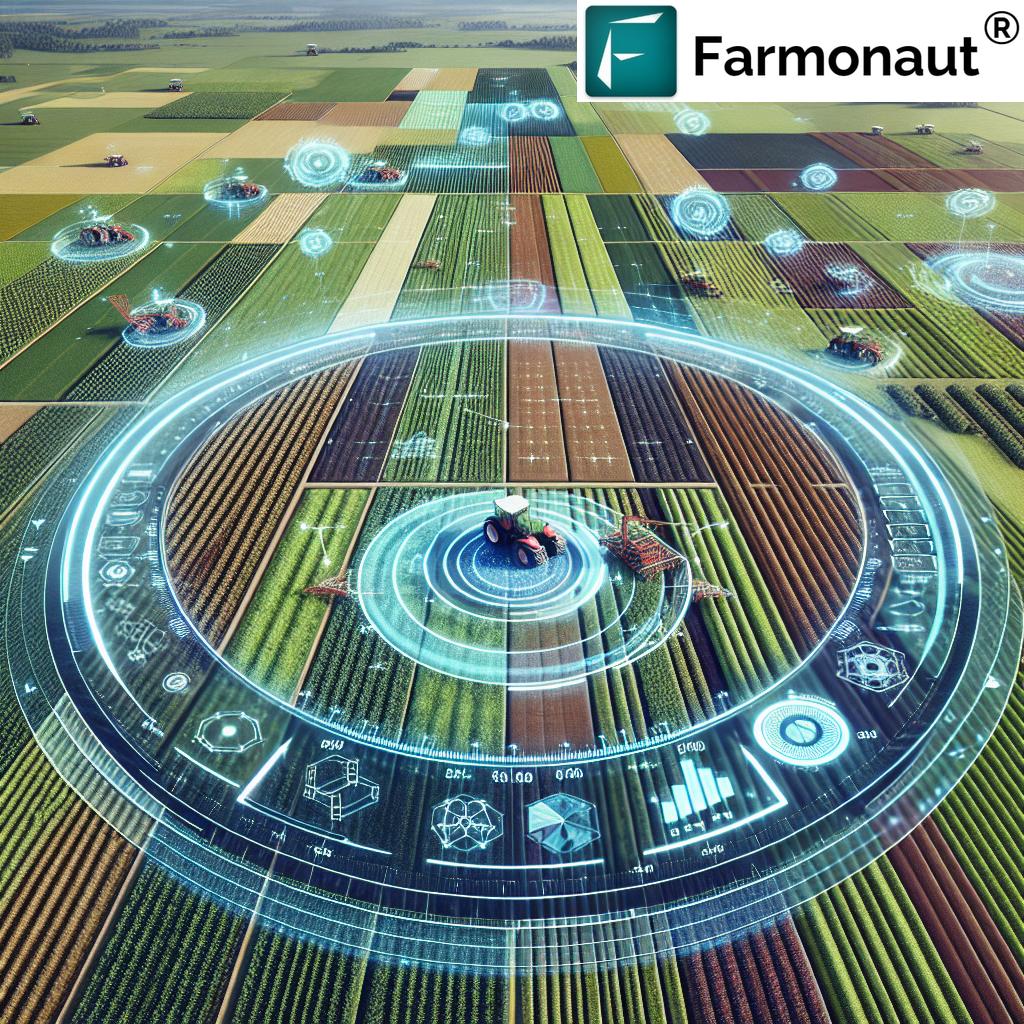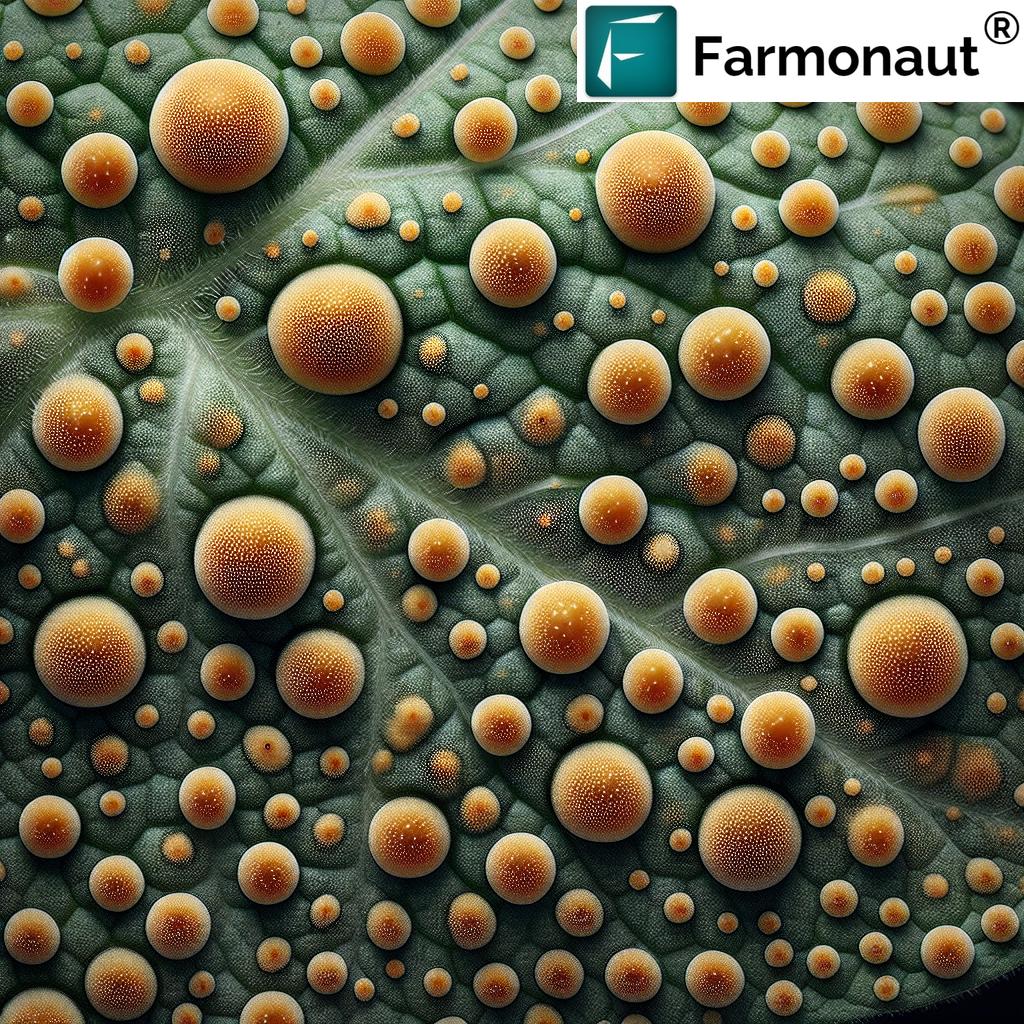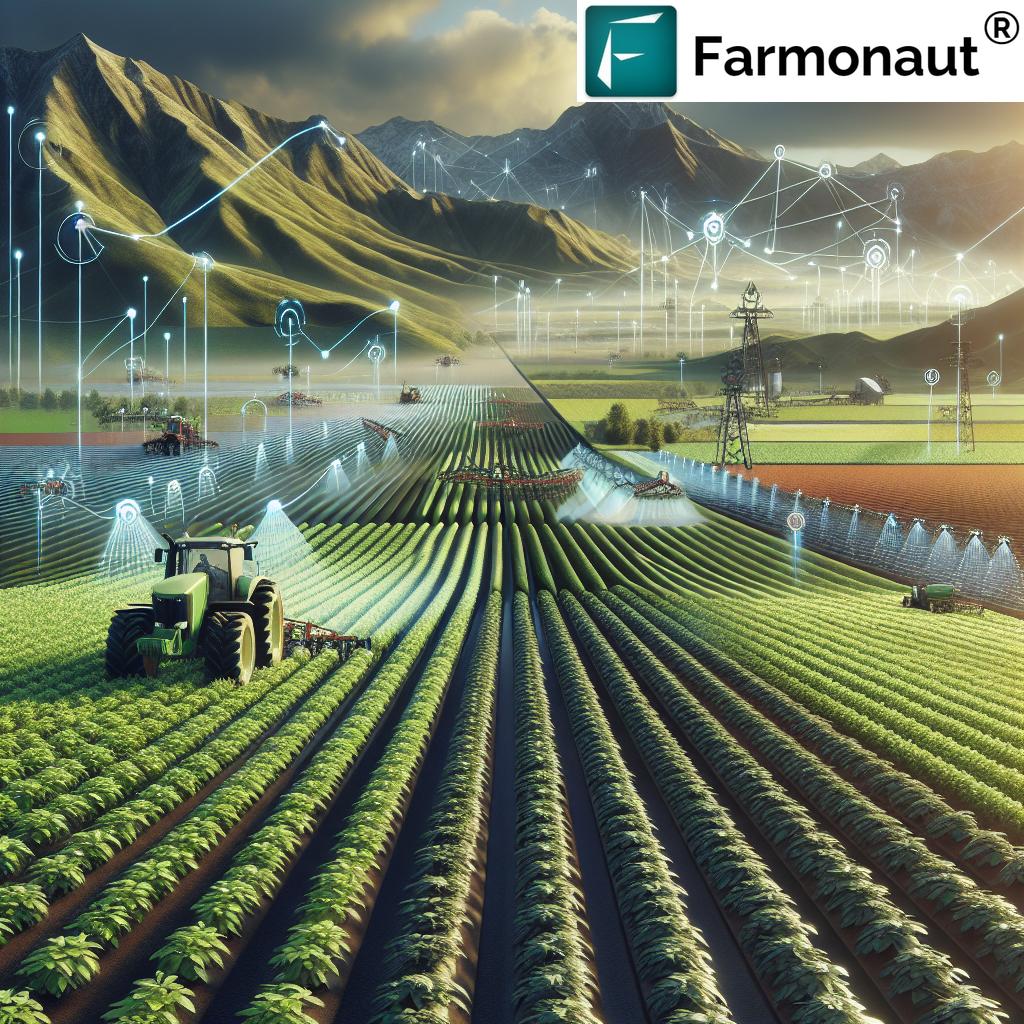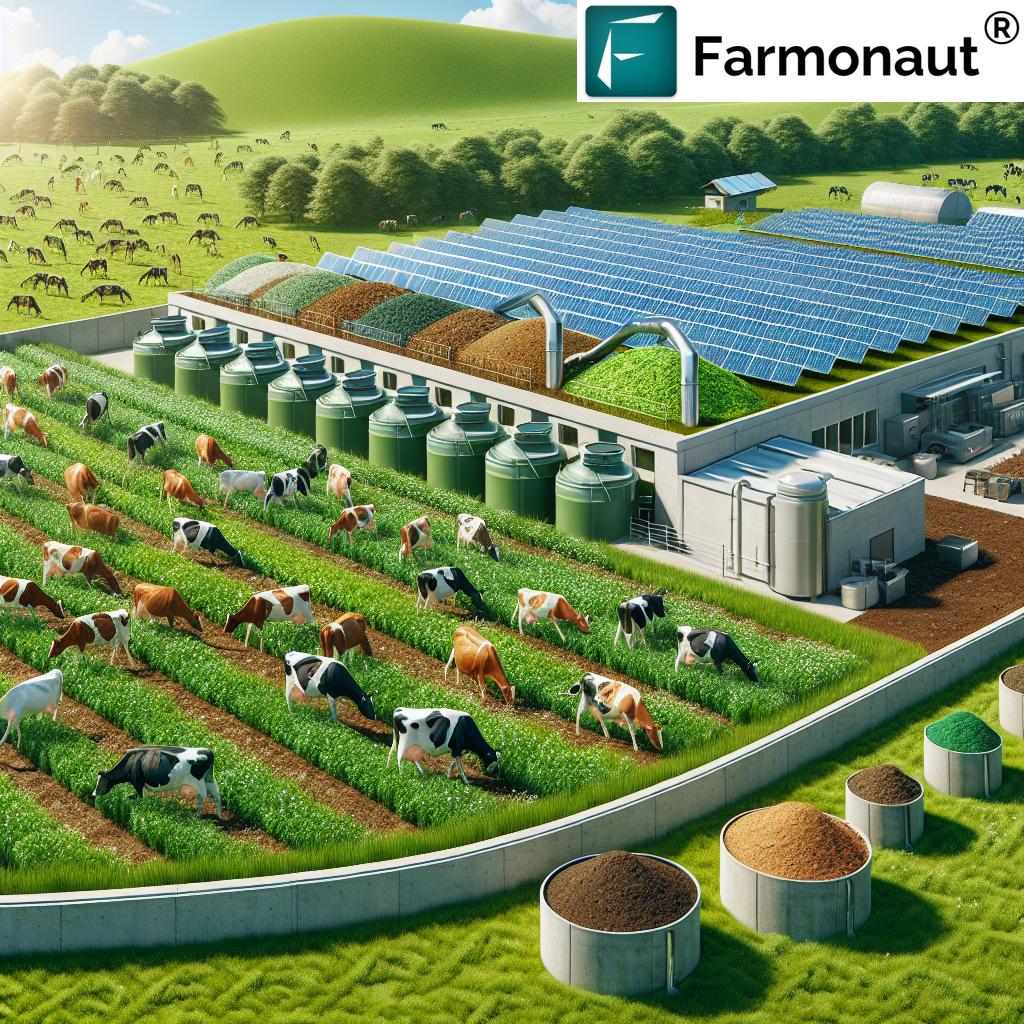Table of Contents
- Introduction
- Understanding Precision Farming
- Key Technologies in Precision Agriculture Technology
- Precision Farming Entry-Level: 7 Yield-Boosting Tips
- Tip-by-Technology Impact Table
- Step-by-Step Guide to Implementing Precision Farming
- Benefits of Precision Farming & Sustainability
- Challenges & Overcoming Barriers in Precision Agriculture
- Farmonaut: Making Precision Farming Accessible
- Frequently Asked Questions (FAQ)
- Conclusion
“Precision farming can increase crop yields by up to 20% using data-driven decision-making and advanced remote sensing technologies.”
Precision Farming Entry-Level: 7 Yield-Boosting Tips
Precision farming is quickly transforming how we manage farms, optimize resources, and boost agricultural yields. By harnessing key advances in precision agriculture technology—from remote sensing in agriculture to IoT sensors in agriculture—we’re able to make smarter, data-driven farming decisions, reduce waste, and promote long-term sustainability.
In this comprehensive guide, we’ll break down the core concepts of precision farming, spotlight essential technologies, and reveal seven yield-boosting, proven tips. Plus, we’ll spotlight how innovative platforms like Farmonaut make precision agriculture affordable and accessible for all farmers, no matter their geographic location or farm size.
Understanding Precision Farming: The Modern Farming Revolution
Precision farming—sometimes called precision agriculture—uses a data-driven, high-tech approach to optimize every step of the crop production process. Traditional farming methods often treat entire fields uniformly. Precision farming, on the other hand, recognizes that variability exists across every field: soil composition, moisture, pest infestation, and crop needs may vary not just seasonally, but even within a few meters.
By utilizing advanced technologies like remote sensing, IoT sensors, and GPS-based mapping, precision farming enables tailored interventions, precise resource use, and continuous monitoring. The result? More efficient farming, higher yields, lower input costs, and a significant reduction in environmental impact.
What Makes Up Precision Farming?
- Application of inputs (like water, fertilizers, pesticides) at exactly the right rates and in the right locations
- Continuous monitoring of soil, crop health, and environmental conditions
- Leveraging data to drive farming decisions and maximize operational efficiency
- Reducing waste and minimizing negative environmental impact
- Enhancing productivity—enabling farmers to increase crop yields sustainably
The Core Goals of Precision Farming
- Increase efficiency by targeting interventions
- Reduce waste—both in terms of inputs and environmentally harmful practices
- Boost sustainability and stewardship of natural resources
- Enhance decision-making through accurate, real-time data
Key Technologies in Precision Agriculture Technology
Let’s look at the advanced technology driving the precision farming revolution. These tools don’t just help farmers; they optimize farming for data-driven efficiency, higher yields, and stellar sustainability.
-
Global Positioning System (GPS)
GPS technology enables farmers to map their fields accurately, track equipment movements, and guide machinery with precision. Uniform planting, fertilization, and harvesting become possible, reducing costly overlaps and gaps. GPS-enabled tools turn tractors and harvesters into smart, self-steering machines—streamlining operations and saving resources.
-
Geographic Information System (GIS)
A GIS integrates many types of data (soil type, elevation, crop history) to create layered maps of your fields. These maps reveal areas with unique needs, allowing for site-specific management and better resource allocation.
-
Remote Sensing in Agriculture
Modern remote sensing in agriculture uses satellites, drones, or aerial sensors to monitor crops, soil, and environmental conditions in real time. This technology uncovers subtle signs of pest issues, water stress, or nutrient deficiency—offering timely insight for effective interventions.
-
Variable Rate Technology (VRT)
Variable rate technology (VRT) is at the heart of resource optimization. VRT enables precise application of inputs across a field—more fertilizer where the soil is poor, less where it’s rich; more water in dry patches, less in naturally moist sections. VRT makes every input count!
-
IoT Sensors in Agriculture
IoT sensors in agriculture continuously monitor soil moisture, temperature, humidity, nutrient levels, and much more. They can support connecting entire farms and enabling immediate, automated adjustments. Data from IoT sensors guides timely interventions that optimize crop growth.
-
Artificial Intelligence (AI) and Machine Learning
AI and Machine Learning analyze the vast flow of data from all automation systems—predicting everything from yield to likely pest outbreaks. AI-driven platforms reveal trends hidden to the human eye, enabling bold, proactive decisions that optimize entire growing seasons.
Farmonaut: Satellite-Driven Precision for Every Farm
As a pioneering agricultural technology provider, we at Farmonaut offer innovative, satellite-based farm management solutions. We’re on a mission to make precision agriculture affordable and scalable for farmers across the globe, empowering smarter management using advanced data and powerful tools.
-
Satellite-based crop health monitoring:
Our platform helps monitor crop health, soil moisture, and critical field parameters—delivering insights to guide irrigation, fertilizer application, and pest control. -
AI-driven advisory:
Receive real-time advice on crop management, weather, and resource optimization, tailored to your field conditions. -
Blockchain-based traceability:
Guarantee product traceability using our secure blockchain solution—and enhance trust across the agricultural supply chain. -
Fleet and Resource Management:
Digitally monitor and optimize fleet & resource management for agricultural equipment, boosting efficiency and operational cost savings. -
Carbon Footprinting:
Reduce the environmental impact of farming with accurate carbon footprint tracking and actionable sustainability insights. -
API Integration:
Easily integrate our satellite & weather data API into your systems, or explore the developer documentation for full custom solutions.
Precision Farming Entry-Level: 7 Yield-Boosting Tips
Ready to put precision farming into action? Here are seven expert, science-backed tips for maximizing your yields, optimizing resources, and achieving long-term sustainability—whether you’re cultivating wheat, rice, maize, pulses, or any specialty crop.
-
Soil Health Management with Remote Sensing & Sensors
Begin any precision strategy with a comprehensive soil health assessment. Utilize sensors, satellite imaging (NDVI), and GIS maps to monitor nutrient levels, organic content, pH, and moisture across field zones. Tailor lime, compost, or fertilizer application based on spatial soil variability to optimize crop growth and minimize waste.
-
Real-Time Crop Monitoring Systems for Early Intervention
Deploy satellite, drone, or IoT sensors for continuous crop monitoring. Early detection of pest/disease issues or water stress allows for targeted, timely interventions—limiting spread and reducing input use.
-
Variable Rate Fertilization with VRT
Leverage Variable Rate Technology (VRT) and fertilizer spreaders synched to GPS or sensor-guided maps. Apply nutrients only where needed, reducing fertilizer costs by up to 30% while increasing yields.
-
Precision Irrigation Using IoT Sensors
Install IoT soil/moisture sensors to guide irrigation scheduling and volumes by the actual needs of each area. Avoid overwatering and maximize water use efficiency, especially in drought-prone regions.
-
Targeted Pest and Disease Control
Use remote imagery and AI analytics to pinpoint outbreaks. Instead of spraying an entire field, focus pesticide application only where pests threaten yields—reducing both costs and environmental impact.
-
Efficient Planting & Harvest with GPS Guided Farm Equipment
Embrace GPS guided farm equipment for 100% accurate seed placement, uniform population, and reduced overlap during planting or harvesting. Ensures every plant receives optimal space and resources for healthy growth.
-
AI-Powered Data-Driven Farming Decisions
Analyze farm data using AI and modeling platforms to predict outcomes, simulate scenarios, and optimize input application. AI-driven planning maximizes yield per hectare—every season, year after year.
“Over 60% of farmers adopting precision agriculture report significant reductions in fertilizer and water usage through resource optimization.”
Precision Farming: Tip-by-Technology Impact Table
Step-by-Step Guide: Implementing Precision Farming
Want to bring these techniques to your own farm? Follow these practical steps for entry-level and scalable precision agriculture adoption:
-
Assess Your Farm’s Needs
- Analyze field variability: Where do you see yield gaps? Which areas have waterlogging, drought stress, or pest issues?
- Identify target objectives: More efficient water use? Disease reduction? Crop health improvement?
-
Invest in the Right Technology
- For entry-level farmers: Start with GPS mapping, basic soil sensors, or mobile satellite crop monitoring systems.
- Expand to IoT networks, advanced GIS mapping, and VRT tools as budget permits.
- Research platforms, like Farmonaut, to reduce upfront investment and streamline management.
-
Collect, Analyze, and Visualize Data
- Gather data on soil properties, weather, crop performance, and remote sensing images.
- Leverage GIS and software, like Farmonaut’s app, for easy field maps and variability analysis.
-
Develop a Precision Management Plan
- Use collected data to guide your inputs: irrigation, fertilization, and protection tailored to each area.
- Set measurable goals (e.g., “reduce fertilizer use by 20%” or “raise yield on low-lying acres by 15%”).
-
Monitor, Adjust, and Optimize
- Monitor outcomes with IoT and remote monitoring. Use trend data to improve year-to-year management.
- Continually adjust rates and interventions for maximum yield and cost savings.
Benefits of Precision Farming & Sustainability
Precision farming delivers tangible benefits to farmers, food systems, and the planet. Here’s why every grower should consider embracing data-driven decision-making:
- Increased Efficiency: Apply water, fertilizers, and pesticides only where needed. Reduce operational costs and limit wasted resources.
- Improved Yields: Data and targeted management drive healthier crops and better harvests—boosting farm income.
- Environmental Impact: Cut overuse of inputs, limit pollution, and conserve water. Adopt practices that enhance soil structure, organic matter, and long-term sustainability.
- Empowered Decisions: Access to near-real-time, accurate information enables proactive, flexible management.
Farmonaut’s Role in Farm Productivity & Sustainability
- Cost-effective remote crop monitoring for all farmers using our web, Android, or iOS app—minimizing financial barriers.
- Blockchain-based product traceability delivers transparency and trust in global supply chains.
- Carbon footprint tracking (see our carbon footprinting solution) helps meet evolving food industry standards and environmental goals.
Challenges & Overcoming Barriers in Precision Agriculture
Modern farms encounter a range of obstacles while adopting precision agriculture. Here’s how to navigate these, ensuring your investment yields real outcomes:
- High Initial Investment: Advanced tools (hardware/software) can be costly. Lower this by using Farmonaut’s affordable, subscription-based satellite monitoring and app platforms—no expensive on-site equipment needed.
- Technical Complexity: Interpreting data isn’t always straightforward. Invest in training, workshops, or leverage AI-driven advisory systems (like Farmonaut’s Jeevn AI) for easy-to-understand, actionable recommendations.
- Data Management: Handling vast amounts of farm data requires robust, secure systems. Farmonaut’s cloud platform manages this efficiently for you.
- Connectivity Issues: Many remote areas struggle with internet access. Farmonaut’s app is optimized for low bandwidth; lightweight data transmission ensures usefulness even in connectivity-challenged regions.
Solutions & Support
- Seek financial support—look for government or extension agency programs to cover early stage costs (where available).
- Begin with pilot projects before scaling up. Use Farmonaut’s flexible subscriptions to start small and assess effectiveness.
- Invest in continuous learning—use online courses and learning communities to master new tools.
- Engage with experts through digital platforms, and leverage Farmonaut’s knowledge hub for the latest precision farming advice.
- Start leveraging advanced solutions for large scale farm management to streamline operations, improve traceability, and get advanced analytics.
Affordable Precision Agriculture: Farmonaut Subscription Options
Explore Farmonaut’s transparent, scalable subscription plans for every farm—designed to meet the needs of smallholders, progressive growers, and agribusinesses.
Frequently Asked Questions: Precision Farming & Technology
Q1. What is precision farming, in simple terms?
Precision farming is an innovative approach to agriculture that uses advanced technologies like sensors, GPS, satellite imagery, and AI to optimize crop yields, manage soil and input resources efficiently, and enhance sustainability on every field—down to the meter.
Q2. What are the most essential technologies for an entry-level precision agriculture approach?
- GPS mapping and guided equipment for uniform application
- Soil health and moisture sensors for understanding real-time conditions
- Remote sensing imagery (satellite or drone) for monitoring crop health
- GIS platforms for visualizing field variability
Q3. How can IoT sensors and AI help farmers improve productivity?
IoT sensors provide accurate data on soil and climate conditions, helping farmers make timely, location-specific decisions. AI analyzes these data streams to predict crop outcomes, sending personalized recommendations that lead to higher yields and more resource-efficient farming.
Q4. Is precision farming suitable for small-scale or only large farms?
Precision farming—especially today—is scalable and accessible for farms of all sizes. Cloud-based solutions, affordable satellite monitoring, and app-guided advice remove the need for expensive, large-scale hardware investments. Platforms like Farmonaut are designed to support smallholders as well as large agribusinesses.
Q5. Why should I care about blockchain-based traceability in agriculture?
Blockchain ensures that every product’s journey—from farm to fork—is transparent and tamper-proof, fostering trust with consumers and simplifying compliance. Farmonaut’s traceability solution (learn more here) helps food companies, farmers, and consumers by documenting supply chains end-to-end.
Q6. How does precision farming increase sustainability?
By reducing overuse of chemicals, saving water, and targeting interventions only where needed, precision farming helps safeguard the environment, improve soil health, and ensure long-term productivity—enabling responsible, climate-smart agriculture for the future.
Conclusion: Precision Farming for Sustainable, High-Yield Agriculture
Precision farming is more than just adopting advanced technology on the farm—it’s a shift in mindset and management. By leveraging the power of remote sensing in agriculture, IoT sensors, GPS guided equipment, and AI analytics, farmers around the globe are witnessing increased efficiency, boosted yields, and enhanced sustainability.
Entry-level adoption doesn’t require massive investment—but it does demand a willingness to adapt and embrace data-driven farming decisions. Whether you manage a single plot or thousands of acres, the benefits—better productivity, lower input costs, transparency with product traceability, and sustainability—are within your reach.
As we at Farmonaut continue democratizing precision agriculture technology, any farmer, anywhere can now access satellite-driven insights, AI-based recommendations, and powerful resource management tools—from the palm of their hand. Join the global movement toward smarter, more efficient, and truly sustainable agriculture.
Ready to transform your farm? Download the Farmonaut app or access our API today, and take the first step towards a new era of precision farming!
Interested in crop plantation or forestry advisory for your scale or community initiative? Learn more or get started now.














